Nextbit Robin review: This ambitious 'cloud phone' is beautiful but flawed
Gallery: Nextbit Robin review | 16 Photos
Pros
- Cloud backups work well
- Gorgeous design
- Nearly stock Android 6.0 Marshmallow
Cons
- Camera can be slow to shoot
- Mediocre battery life
Summary
Nextbit's first phone is as ambitious as it is pretty. The phone's way of automatically backing up apps and photos you haven't touched in a while works better than expected, and just might free some people from the dread of full phone anxiety. Too bad, then, that the unremarkable camera and disappointing battery life detract from a thoughtful (and truly cool) experience.
Hardware

Calling hardware "sexy" is both lazy and just absurd, but it sort of feels appropriate sometimes? There's something about seeing a design that tries to evoke speed or strength that can hit you right in the guts before you know it. That's not the case here. The Robin isn't sexy; it's cute, and I'm absolutely, over-the-moon in love with how it looks. It's charming in a way that most smartphone makers seem afraid or just unwilling to embrace. That's saying something, considering the Robin is basically just a flat rectangular box.
My review unit is constructed of white and -- what else? -- robin's-egg-blue polycarbonate, and it's how those colors work with the Robin's geometry — all straight lines, right angles and circles — that makes it feel so festive and fresh. The white segment wraps around the phone, matching up perfectly with the length of the 5.2-inch 1080p display and its bezel. Meanwhile, the top and bottom are capped off in light blue. It's there that you'll find two circular speaker grilles, a proximity sensor and the 5-megapixel front-facing camera. Flip the phone over and you'll see the main 13-megapixel camera and LED flash, along with a discreet Nextbit logo.

And then there's the cloud. Since cloud storage is core to the Robin experience, Nextbit stamped a cloud logo right on the phone's back. Sitting under that are four tiny LEDs to let you know how things are progressing. These lights spring into action when the phone automatically archives your apps and photos. It's a neat touch, even though you probably won't spend much time looking at it.
Nextbit mostly nailed the little things, too. The phone is light without feeling too light, and the phone's build quality is first-rate. The power button doubles as a fingerprint scanner, and only rarely did it ask me to try again. My only real gripe is that the two volume buttons sitting nearly flush with the Robin's left side are a little small, making them tough to find by feel.
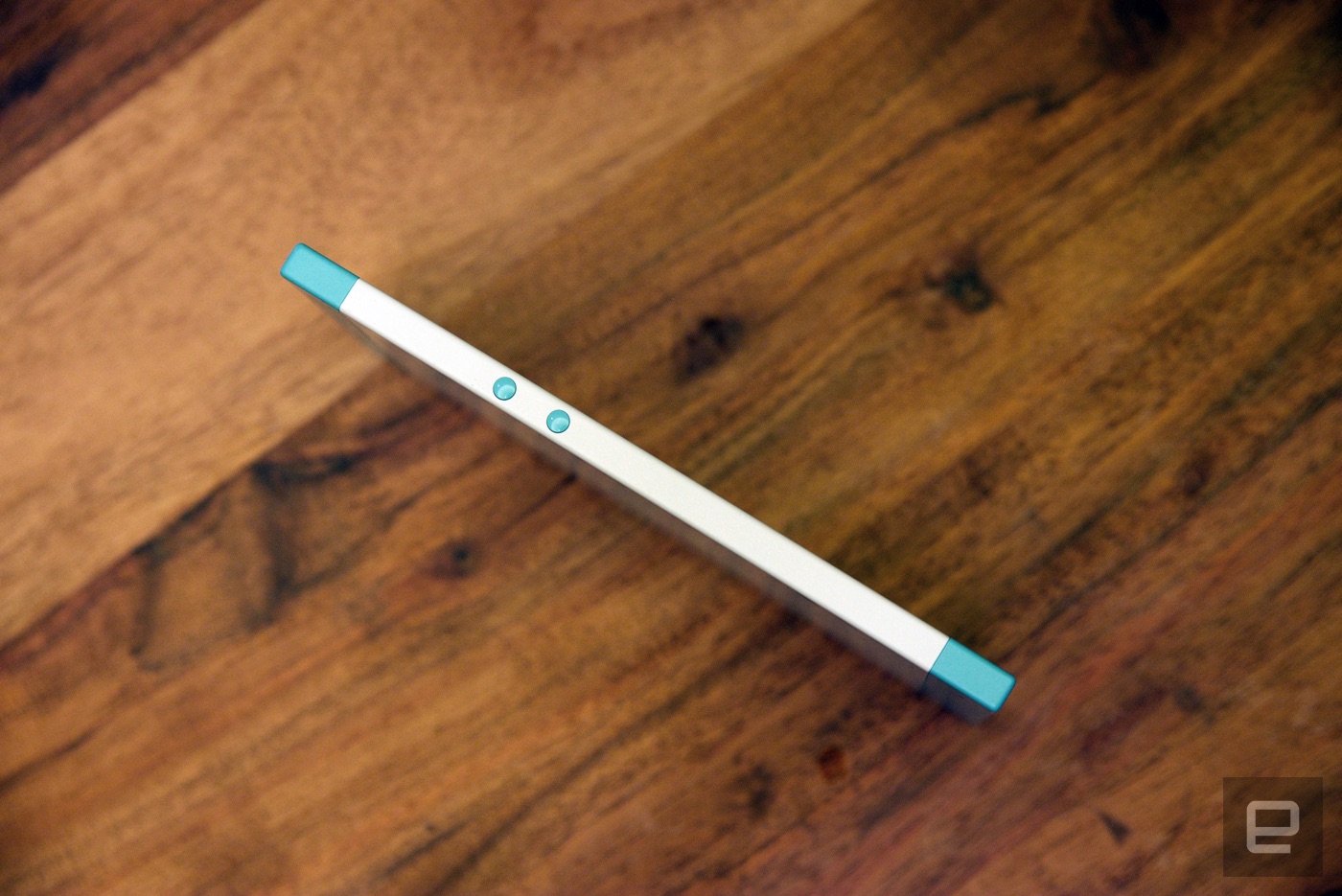
That lovely shell also hides a very familiar set of components. The whole operation is powered by a hexacore Qualcomm Snapdragon 808 chipset and 3GB of RAM, along with an NFC sensor, 32GB of internal storage, a 2,680mAh battery and all the usual radios. Between Nextbit's choice of colors, those powerful innards and Android 6.0 Marshmallow, I've started looking at the Robin as a sort of alternate-universe Nexus 5X. Both even use USB Type-C to charge, and I'm told the included cable shouldn't fry any unfortunate laptops.
How a phone looks and feels is only a part of a larger picture, but man, props to Nextbit for building such a beautiful device. Hopefully the company will stick around long enough to give us a sequel.
Display and sound

While we're talking about looks, let's take a minute to peer more closely at the Robin's 5.2-inch 1080p IPS LCD display. Honestly, the screen is exactly what you'd expect from a startup putting out a reasonably priced Android phone. It's not stunning, but it's not lousy; the screen is the epitome of "just fine." It offers vivid colors and solid viewing angles, and you won't be able to make out individual pixels, either. What you might notice, though, are very faint lines running horizontally across the screen. The effect is more pronounced if you're looking at a lot of white, and while I suspect it's just the screen's touch layer, the lines can be a little tough to un-see. Still, this is me being a persnickety reviewer; some people probably won't even notice.
If anything, the software sometimes makes readability a problem. The notification shade is mostly transparent (unlike the bone-white stock Android version) and slightly obscures all the stuff you were just looking at.

As I've mentioned, the Robin also sports a pair of front-facing speakers, just like HTC's flagship M series. That's hardly a surprise considering Nextbit's design chief, Scott Croyle, previously worked on the M7 and the M8. It's a shame, then, that the speakers look better than they sound. You can crank up the volume pretty high, but musically, the speakers are hit-or-miss. I've found that podcasts, audiobooks and songs with crisp vocals sound pretty good. Most other music winds up sounding slightly muddy and indistinct, despite the channel separation you get from having two separate speakers. The BoomSound speakers on HTC's old M7 and M8 blow the Robin out of the water, but Nextbit's audio setup will do in a pinch.
Software
Android
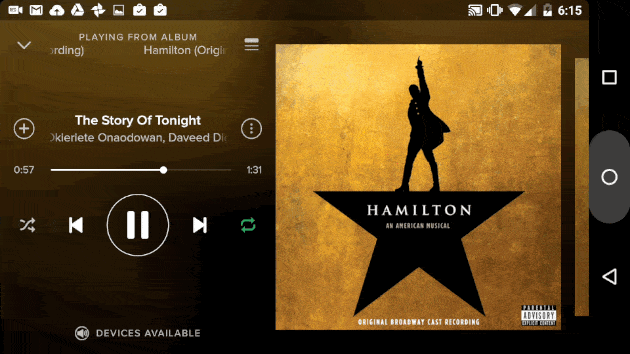
Cloud-based tricks notwithstanding, the Robin's software is pretty straightforward. It ships with Android 6.0 Marshmallow, which means, among other things, that the phone will frequently ask for specific apps permissions, while Now on Tap provides extra context with a long press of the home button. Nextbit was careful to mostly leave Android untouched. Instead, a lot of what you'll notice is subtle visual tweaks. Gone is the usual app launcher: All of your apps, whether installed or preloaded, wind up on one of your home screens. You can supplement those app shortcuts with widgets, but you'll access them either by pinching your fingers together on-screen or long-pressing the multitasking key. Oh, and as you swipe left and right through those home screens, you might notice a thin layer of fog rolling in, just to hammer home the fact that Robin's roots lie in -- wait for it -- the cloud.
I'm glad there's a solid software foundation here, but I'm a little concerned about the pace of future updates. Normally, the cleanliness of Nextbit's approach to software would make the process of releasing those sweet, sweet Android updates faster, but it's not clear how much work it takes to customize these builds to play nice with the Nextbit cloud.
Life in the cloud
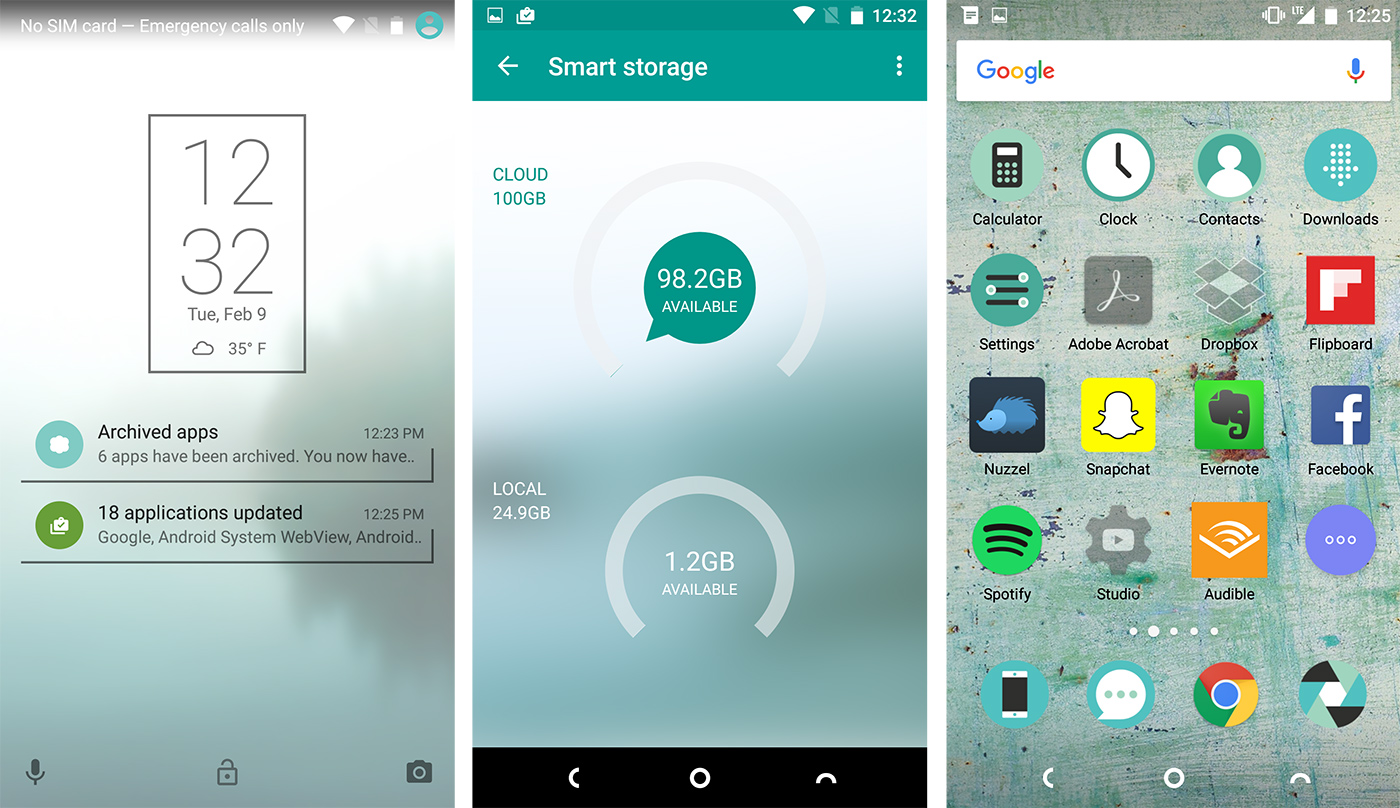
Speaking of, now we're getting to the meaty stuff. The Robin comes with 32GB of local storage, augmented by 100GB of free Amazon cloud storage. Over days and weeks, Robin will quietly offload stuff you haven't interacted with recently. Your apps' user data (think: account settings) stay on the phone, so when you tap the gray icon of an archived app, you're back where you left off before Robin cleaned things up. It's a thoughtful idea, one meant to make sure you've always got some room on your device for more photos, or the audiobook you need to get through a flight.
First, a few notes. By default, Robin backs up your files only when you're connected to WiFi, but the brave among you can sync whenever you please. Same goes for power: The phone won't back up anything while running on its own battery unless you specifically allow it to.

Robin works to clean itself by managing two kinds of content: photos and apps. Photos you haven't touched in a while are downsized to screen resolution in the included Gallery app; they look fine when all you're doing is swiping through them on the device. It's when you want to zoom in and see more detail that the smart storage really kicks in; it'll automatically start downloading the full-resolution file and swap it in for the lower-res version. It's so easy, in fact, that you might not even notice anything's happening. That's just how Nextbit wants it.
Apps are theoretically trickier, since we just want and expect them to work when we tap on them. Tapping on an archived app (remember, those are the gray ones) will prompt Robin to re-download and reinstall the app package alongside the user data that's still on your phone. To my shock, this worked perfectly in every situation I tried.

Spotify remembered which Doctor Who theme song I was listening to. Airbnb was still logged in and reminded me of my upcoming trip to Barcelona. Outlook showed me my overflowing work inbox without any extra work (which is great, as setting up my corporate mail is the worst part of getting a new phone). Even Tinder continued searching for local folks. The rub is that depending on your connection, it can take a while for the app to reinstall. If you're in a situation where you absolutely need to access a particular application, it might be minutes before you can start using it again.
It helps to understand the logic at play here: Any photo or app you open is pushed to the bottom of the list of things to be offloaded. But! New content that you download takes precedence over anything at the top of the list, so even stuff that you just opened could head to the chopping block under the right conditions. Thankfully, there's a way to protect certain apps from being offloaded altogether. Swiping down on an app icon effectively pins it to your home screen, meaning you'll never have to worry about it disappearing abruptly.
Mechanically, the process all sounds so simple; it's bound by a straightforward logic and thoughtful execution. Still, I was waiting for -- and maybe even expecting -- something to go awry. Nothing did. I'll continue testing the phone to see how well Nextbit's system holds up over time, but for now, this is one startup that managed to deliver what it promised.
Camera
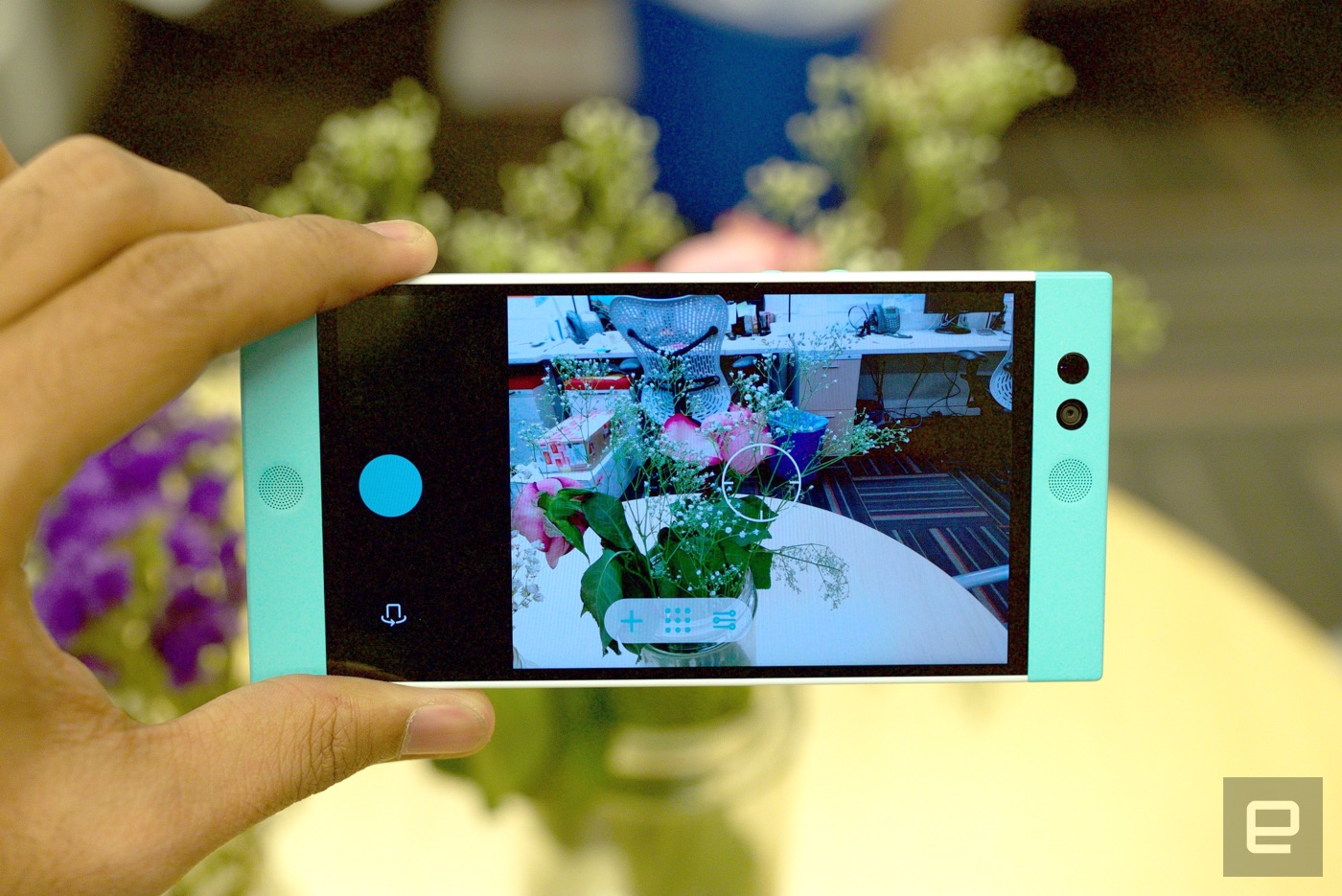
Much like its screen, the Robin's 13-megapixel rear camera is fairly no-frills. It's the sort of shooter that winds up on lots of midrange smartphones, which is to say it's usually passable, if unremarkable. It feels like we've had nothing but miserable, gray days for weeks here in New York, but the Robin did an accurate job of capturing the few patches of color I could find. Photos had a decent amount of detail, too; you might not want to print these pictures out, but there's enough going on here that you could share them on social media without fear of embarrassment. More ambitious photographers also have the option to shoot in a manual mode that offers nuanced control over ISO, white balance, shutter speed, exposure and focus. You'll need those controls if you want to master low-light or night photography with the Robin, too -- while dark shots weren't quite as grainy as I expected, the camera had a tough time focusing on subjects when things started to get dim.
Gallery: Nextbit Robin camera samples | 14 Photos

That's all nice, but there's one issue I can't get over. There's often a significant delay between tapping the shutter button and the camera actually snapping the photo. Even with HDR off, it takes a full second for the camera to focus and capture what you're looking at. Yes, perhaps I'm spoiled by devices like last year's Moto X and its near-instantaneous photo capture, but one second can be the difference between art and a missed opportunity. Strangely enough, the delayed shutter response never seemed to yield a blurry or otherwise bad photo; it's as if the phone actually captures the shot when you want it to but freezes temporarily anyway.
The issue seems a little worse on the 5-megapixel front-facing camera, which otherwise takes respectable selfies. My review unit also had some issues with the built-in Gallery app: Tapping the icon to see the most recent photo worked fine, but it never let me scroll to see pictures I'd snapped in the past. Nextbit says a fix is coming soon, but you'd still do well to keep an eye on it.
Performance and battery life

Using the Robin as my daily driver for a week and a half was mostly painless, an experience marred only by the occasional hiccup when firing up app after app and bouncing between them all in a fit of productive insanity. The Snapdragon 808 is hardly the newest chip, but it still provides more than enough power for most folks' daily routines. The situation changes slightly when you push it with high-performance games -- the hiccups become a little more pronounced -- but overall, using the Robin felt a lot like using an LG G4 or a Moto X Pure Edition. Which is to say, not bad at all.
| NEXTBIT ROBIN | NEXUS 5X | MOTO X PURE | ONEPLUS 2 | |
|---|---|---|---|---|
| AndEBench Pro | 9,930 | 6,519 | 9,686 | 9,945 |
| Vellamo 3.0 | 3,597 | 3,662 | 4,401 | 3,025 |
| 3DMark IS Unlimited | 19,506 | 14,610 | 18,747 | 23,598 |
| SunSpider 1.0.2 (ms) | 687.6 | 687.6 | n/a | 1,516 |
| GFXBench 3.0 1080p Manhattan Offscreen (fps) | 11 | 15 | 15 | 25 |
| CF-Bench | 31,079 | 32,376 | 74,237 | 79,168 |
| SunSpider 1.0.2: Lower scores are better. | ||||
Still, I wish Nextbit had been more ambitious when it came to the Robin's battery life. I mean, yes, that beautifully svelte frame probably wouldn't have been possible if the company had opted for a bigger cell, but the 2,680mAh battery here doesn't exactly thrill. My workdays usually see me dealing with a torrent of Slack messages and emails, with a handful of YouTube videos and Spotify binge sessions thrown in for good measure. On average, the Robin put up with my nonsense for a little over 13 hours before shutting down completely. Bear in mind, we routinely got over 14 hours from the Nexus 5X, which has a battery that's only marginally bigger.
Meanwhile, in our standard video rundown test (looping a 720p video indefinitely with WiFi connected and screen brightness set to 50 percent), the Robin lasted only 7 hours and 20 minutes. That's noticeably lower than the Nexus 5X, which managed to stick around for over 8 hours on a charge. The 5X's less-than-stellar battery already rubbed us the wrong way last year, and it's unfortunate that a small company that built the phone they wanted to see didn't make battery life a bigger priority.
The competition
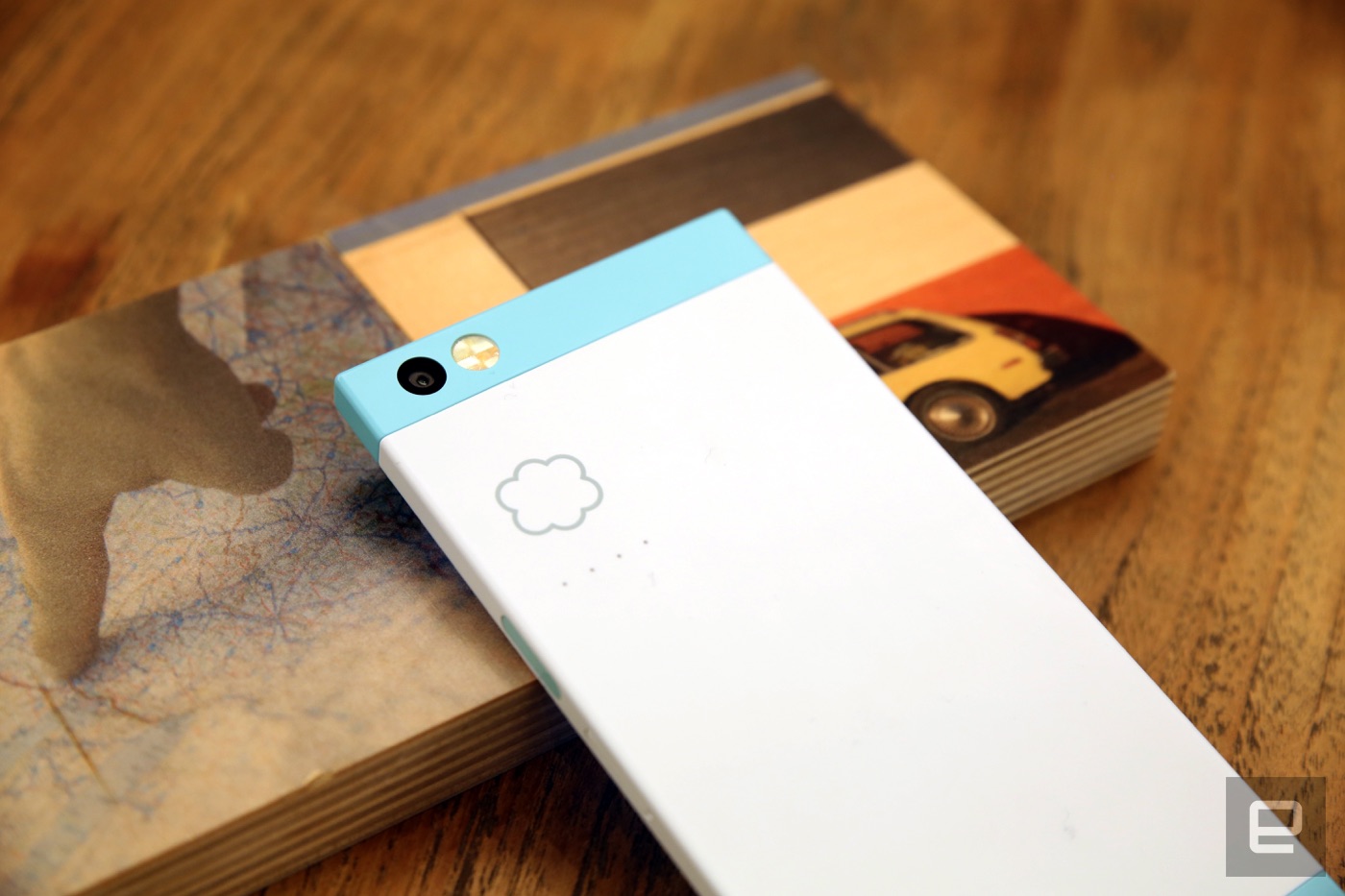
There isn't another phone out there that embraces the cloud the way the Robin does, but still: You can get a lot of smartphones for $399 these days. The Moto X Pure Edition, one of my favorite devices from last year, is available for as little as $399, but that only gets you 16GB of internal storage. You'll almost certainly want to match the Robin's baseline with the $449 32GB Pure Edition, which makes use of the same Snapdragon 808 chip and 3GB as the Robin. Beyond that, you'll get a 21-megapixel camera that, while not top of its class, offers more detail and speed than the Robin's. And hey, there's something to be said for customizing your phone instead of accepting someone else's definition of cool.
If you're less concerned about storing files than you are about getting Android software updates with the quickness, you might want to consider the 32GB Nexus 5X ($399). As I mentioned earlier, it too has a hexacore Snapdragon 808 chip, albeit with two gigs of RAM versus three. Still, you get a completely untouched version of Android 6.0 Marshmallow in exchange for that slight performance dip. The camera experience isn't nearly as poky, either. And if you're tired of hearing about that dang Snapdragon 808, the 64GB OnePlus 2 ($389) comes with a speedier 810 chipset and 4GB of RAM for $10 less than the Robin. Then again, if you were considering going with Robin at all, then you care at least a little about design, and indeed, the OP2 is quite conservative by comparison.
Wrap-up
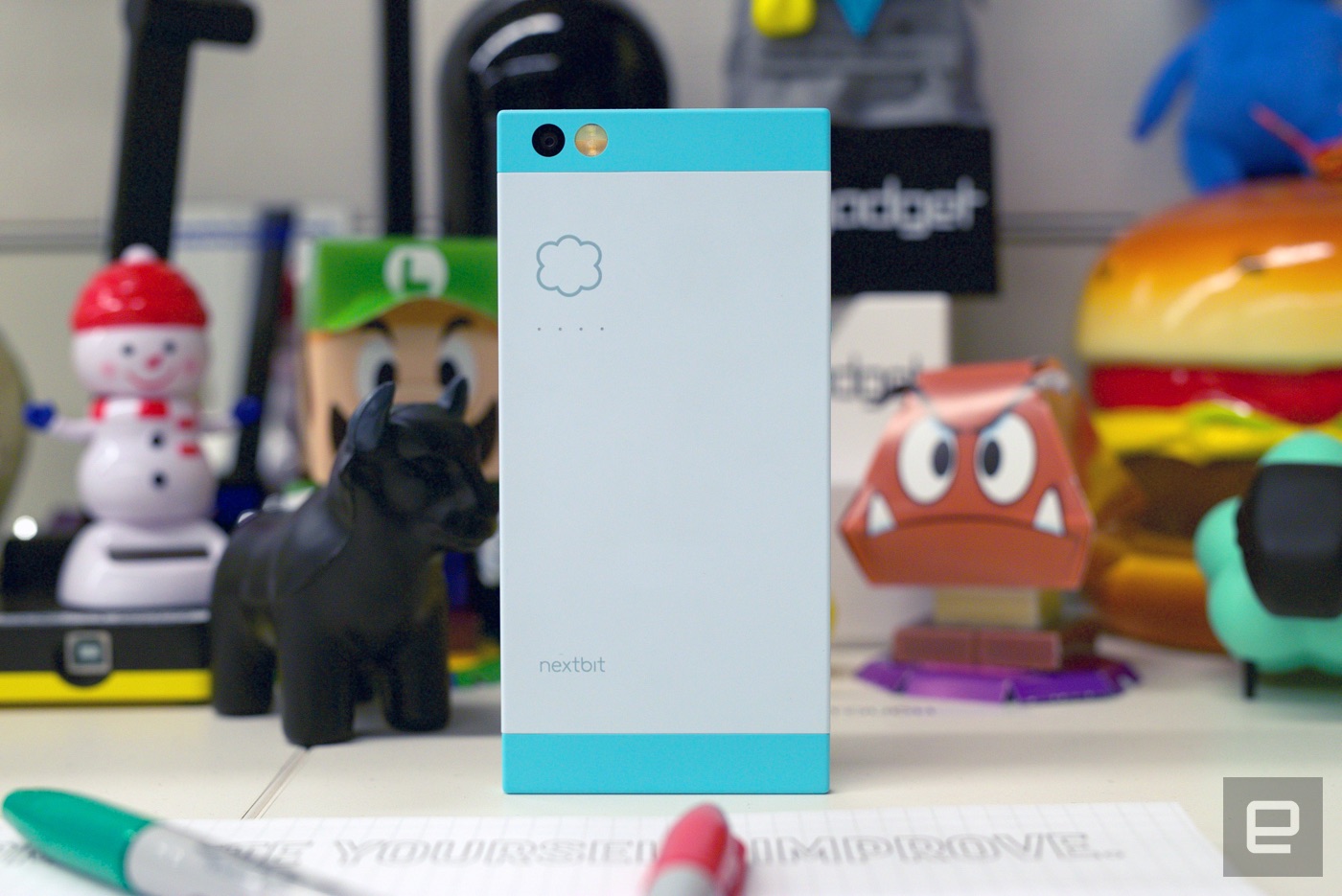
If were a fortune-teller, I'd do two things right now: figure out the next big Powerball payout numbers, and peer into the future to see if Nextbit's cloud-centric approach pays off. The company's cloud backup system just works -- often works surprisingly well. Could it use a little more polish? You bet, but the fact that it runs this smoothly is already a testament to the care its designers lavished on it.
The flip side is that Robin, cute as it is, is far from perfect. The camera can be frustrating. So can the battery. The truth is, were it not for Nextbit's charming design or the convenient cloud backup, the Robin would be just another adequate, reasonably priced Android smartphone. If the thought of possibly never worrying about storage space is thrilling to you, the Robin might be worth the plunge. Everyone else, though, should wait and see if the Robin 2 offers a more well-rounded package












لا يوجد تعليقات
أضف تعليق